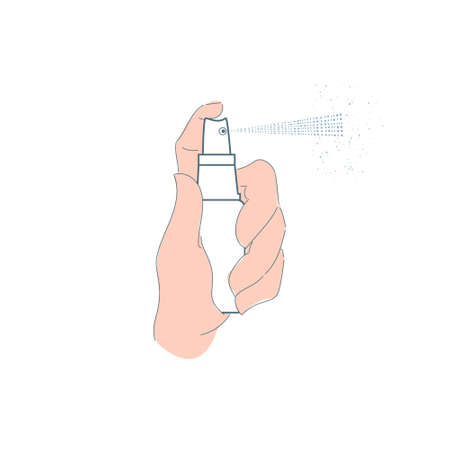Current Landscape of Dermal Fillers in the UK
The UK market for dermal fillers has experienced robust growth in recent years, reflecting a broader shift in beauty standards and self-care priorities across British society. While traditionally associated with celebrities and high-net-worth individuals, non-surgical cosmetic enhancements—particularly dermal fillers—have become increasingly mainstream, attracting a diverse demographic that spans age, gender, and socio-economic backgrounds. London remains the epicentre of aesthetic innovation, but demand is surging in regional cities such as Manchester, Birmingham, and Glasgow as well.
Popular products dominating British clinics include hyaluronic acid-based fillers like Juvéderm and Restylane, prized for their versatility and safety profile. More advanced formulations such as Radiesse (calcium hydroxylapatite) and Ellansé (polycaprolactone) are also gaining traction among practitioners seeking longer-lasting results. The appeal of minimally invasive procedures lies in their ability to deliver subtle yet impactful enhancements—think lip augmentation, cheek contouring, and smoothing of nasolabial folds—without the downtime associated with surgery.
Demographic trends reveal a significant uptick in younger adults (particularly those aged 25–35) opting for preventative treatments, influenced by social media aesthetics and the normalisation of cosmetic tweaks. At the same time, older clients continue to drive demand for restorative procedures that address volume loss and facial ageing. Notably, men represent a growing segment of the market, challenging outdated notions that dermal fillers are exclusively a female pursuit. This evolving landscape underscores both the democratisation of beauty interventions and the need for practitioners to adapt to shifting consumer expectations within the UK.
2. Cutting-edge Innovations Transforming the Industry
The dermal filler landscape in the UK is experiencing a rapid evolution, driven by technological advancements, new materials, and refined techniques. This transformation is not only enhancing treatment outcomes but also shaping patient expectations and clinical practices across the nation.
Emerging Technologies and Novel Materials
Recent years have seen the introduction of advanced filler formulations that go beyond traditional hyaluronic acid-based products. Innovations such as polynucleotide fillers, bio-stimulatory injectables (like calcium hydroxylapatite and poly-L-lactic acid), and hybrid gels are now gaining traction in leading UK clinics. These next-generation fillers promise longer-lasting results, improved biocompatibility, and more natural aesthetic outcomes.
| Filler Type | Main Ingredient | Key Benefits | Typical Longevity |
|---|---|---|---|
| Traditional Hyaluronic Acid | Hyaluronic Acid | Immediate effect, reversible, hydrating | 6-12 months |
| Bio-stimulatory Fillers | Calcium Hydroxylapatite/Poly-L-lactic Acid | Stimulates collagen, gradual improvement | 12-24 months |
| Polynucleotide Fillers | Nucleotides from salmon DNA or similar sources | Tissue regeneration, anti-inflammatory effects | Up to 12 months |
| Hybrid Gels | HA + amino acids/peptides/vitamins | Enhanced skin quality, multi-layered benefits | 6-18 months |
Innovative Techniques and Personalised Approaches
Alongside material innovation, UK practitioners are adopting sophisticated injection methods. Micro-cannula techniques reduce bruising and downtime, while ultrasound-guided injections offer unprecedented precision—minimising risks and improving safety profiles. The trend towards bespoke treatment plans is also evident: practitioners now use digital facial mapping to tailor filler placement for harmonised results that respect British beauty ideals.
The Digital Clinic: Integrating Technology into Patient Care
The digital revolution is reshaping the consultation experience as well. Clinics are utilising 3D imaging and AI-powered analysis tools to visualise projected outcomes before any procedure takes place. This not only empowers patients with greater understanding but also builds trust in an increasingly competitive market.
How UK Clinics Are Adapting to Change
Pioneering UK clinics are investing heavily in practitioner training and adopting international best practices to remain at the forefront of these innovations. Collaboration with manufacturers and participation in global clinical trials ensures British patients have early access to the safest and most effective treatments. As regulatory standards tighten, those clinics embracing innovation—while prioritising patient safety—are setting new benchmarks for excellence in the industry.
![]()
3. Legislative Developments and Regulatory Changes
The UK’s dermal filler industry is undergoing significant transformation as new legislation and regulatory frameworks are introduced to address safety concerns, quality assurance, and professional standards. Recent years have witnessed increased parliamentary attention, culminating in the Health and Care Act 2022, which empowers the government to introduce licensing schemes for non-surgical cosmetic procedures including dermal fillers. This legislative momentum signals a shift towards tighter oversight and heightened consumer protection.
Practitioners across England, Scotland, Wales, and Northern Ireland are now required to adhere to stricter protocols regarding training, consent, and record-keeping. The introduction of mandatory licensing is poised to standardise qualifications, with regulatory bodies such as the General Medical Council (GMC) and the Joint Council for Cosmetic Practitioners (JCCP) playing pivotal roles in setting benchmarks for practice. Notably, there is an increasing emphasis on ensuring that only medically qualified professionals can administer certain types of fillers, limiting access for non-medically trained individuals.
For consumers, these changes promise enhanced safety and transparency. Clinics must now provide clear information on products used, potential risks, and aftercare protocols. The Advertising Standards Authority (ASA) has also tightened regulations surrounding the marketing of cosmetic injectables—particularly concerning age restrictions and misleading claims—thus safeguarding vulnerable groups from unscrupulous advertising tactics.
Looking ahead, practitioners will need to keep abreast of ongoing consultations and anticipated secondary legislation that may further refine the regulatory landscape. For instance, proposals are under discussion regarding a national register of accredited providers and mandatory insurance requirements. These developments are likely to shape public confidence in the industry while also raising operational standards across the board.
In summary, legislative changes represent both a challenge and an opportunity for the UK’s dermal filler sector. Compliance with evolving laws not only ensures client safety but also enhances the credibility of practitioners who demonstrate commitment to best practices in a rapidly changing environment.
4. Shifting UK Beauty Standards and Societal Attitudes
In recent years, the UKs beauty landscape has witnessed a marked transformation, driven by diverse influences such as social media, celebrity culture, and the increasing visibility of non-traditional beauty icons. These shifts have not only redefined aesthetic ideals but also shaped public perceptions of cosmetic interventions like dermal fillers. Historically, British beauty standards gravitated towards subtlety and natural enhancement, with an emphasis on understated elegance rather than overt alteration. However, as global trends permeate local culture, there is a notable rise in acceptance—and even celebration—of more defined facial features and transformative results.
Changing Public Perceptions of Cosmetic Treatments
The stigma once attached to cosmetic procedures is steadily diminishing. Younger generations, particularly Millennials and Gen Z, are more open about pursuing aesthetic treatments as part of self-care and personal branding. This openness is further amplified by influencers who normalise conversations around injectables on platforms like Instagram and TikTok. The following table illustrates generational differences in attitudes toward dermal fillers:
| Generation | Attitude Towards Dermal Fillers | Key Motivators |
|---|---|---|
| Baby Boomers | Cautious, preference for minimal intervention | Anti-ageing, subtle rejuvenation |
| Generation X | Gradual acceptance, privacy valued | Youth preservation, professional image |
| Millennials | Openly positive, trend-driven | Aesthetic enhancement, social media influence |
| Gen Z | Highly accepting, transparency-focused | Self-expression, preventative care |
Social Drivers Impacting Filler Demand in the UK
The surge in demand for dermal fillers can be attributed to several interconnected social factors:
- Digital Culture: The ubiquity of selfies and video calls has heightened awareness of facial features, fuelling interest in minimally invasive enhancements.
- Diversity and Representation: Broader representation in media has expanded definitions of beauty, encouraging individuals from various backgrounds to explore aesthetic options tailored to their unique characteristics.
- Mental Wellbeing: There is growing recognition that appearance-related confidence can positively impact mental health, making cosmetic treatments more widely accepted as tools for empowerment.
The Role of Legislation and Ethical Practice
The shift in societal attitudes is paralleled by evolving regulations aimed at ensuring patient safety and ethical practice. As demand grows, so does scrutiny regarding practitioner qualifications and informed consent. This regulatory focus is crucial for maintaining public trust and supporting responsible innovation within the sector.
Conclusion: A New Era of Acceptance and Expectation
The evolution of UK beauty standards reflects broader cultural changes that prioritise individuality, transparency, and wellbeing. As these trends continue to unfold, they will not only influence how dermal fillers are perceived but also drive future innovations and legislative responses within the cosmetic industry.
5. The Role of Practitioners and Clinic Standards
In the rapidly evolving landscape of dermal fillers in the UK, the qualifications and conduct of practitioners have never been more critical. As consumer demand surges and innovative products flood the market, the responsibility to ensure patient safety and optimal results falls squarely on professionals operating within this sector.
Practitioner Qualifications: Raising the Bar
The industry is witnessing a shift towards stricter accreditation requirements. While in previous years, non-medical personnel could administer fillers with minimal oversight, current trends reflect a movement towards mandatory medical qualifications—often requiring practitioners to be GMC-registered doctors, nurses, or dentists. This change is driven by both regulatory pressure and heightened public awareness regarding adverse outcomes linked to poorly trained providers.
Best Practices for Safe Procedures
Adherence to clinical best practices remains paramount. Leading UK clinics now prioritise comprehensive patient consultations, rigorous consent protocols, and up-to-date knowledge on facial anatomy. In addition, ongoing professional development is encouraged to keep pace with new techniques and products. The implementation of aseptic techniques, emergency management training (including recognition and treatment of vascular occlusion), and the use of high-quality, MHRA-approved products all contribute to safer outcomes.
The Importance of Professional Standards
The future of dermal fillers in Britain will be shaped by a robust commitment to ethical practice and transparency. Clinics are increasingly seeking accreditation from independent bodies such as Save Face or the Joint Council for Cosmetic Practitioners (JCCP), which set benchmarks for hygiene, aftercare, record keeping, and complaint resolution. These standards not only protect patients but also uphold the integrity of the aesthetics sector—ensuring that as beauty norms evolve, treatments remain both safe and effective under qualified hands.
6. Looking Ahead: Opportunities and Challenges
The landscape for dermal fillers in the UK is poised for significant transformation, fuelled by both innovation and evolving consumer demands. As we look to the future, several key growth areas emerge. First, the integration of cutting-edge technology—such as AI-driven facial mapping and personalised treatment protocols—promises to enhance both results and client satisfaction. Furthermore, the rise of biodegradable and bio-stimulatory fillers aligns with increasing public interest in sustainability and natural-looking outcomes, offering clinics a competitive edge.
Potential Growth Areas
Growth is likely to be seen in non-invasive procedures targeting younger demographics seeking preventative solutions rather than corrective ones. This shift is complemented by expanding male clientele, challenging traditional gender norms within aesthetics. Additionally, regional markets outside London are becoming more receptive to advanced treatments, suggesting a broader national uptake.
Ethical Considerations
However, opportunities must be balanced with responsibility. The industry faces mounting scrutiny regarding ethical advertising, informed consent, and safeguarding vulnerable groups—especially minors. Clinics will need to foster transparency and prioritise patient education as part of their service ethos.
Obstacles Facing the Industry
The introduction of stricter regulations presents operational challenges. Compliance with new legislation—ranging from practitioner qualifications to product traceability—may increase costs and administrative burdens for businesses. Moreover, ongoing concerns about unlicensed providers and counterfeit products persist, threatening industry reputation and patient safety alike.
In summary, while the future of dermal fillers in the UK is bright with potential for innovation-led growth, it will require continuous adaptation to regulatory changes and an unwavering commitment to ethical standards. Success will hinge on embracing technology, upholding best practices, and responding proactively to shifting cultural expectations around beauty and wellness.


